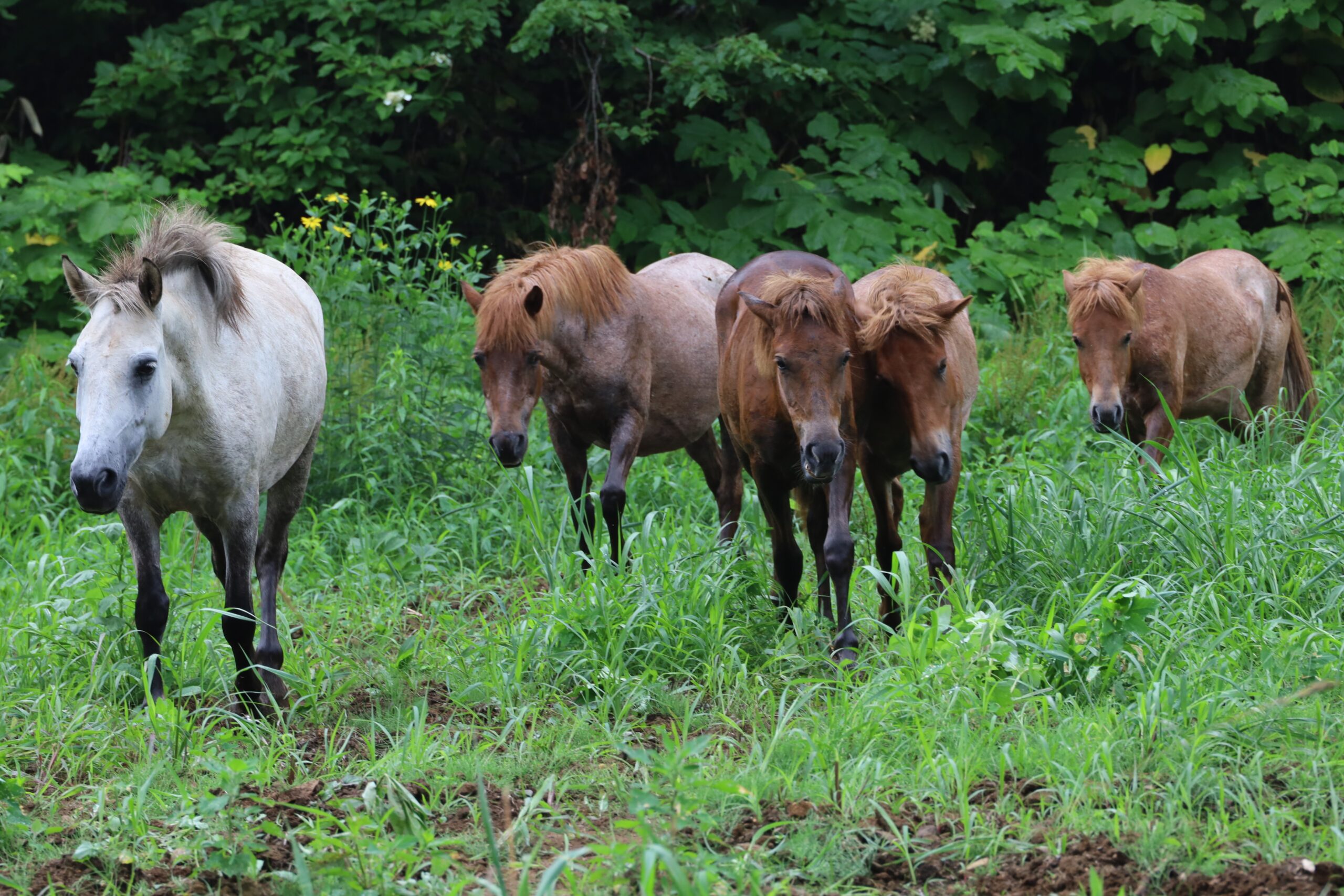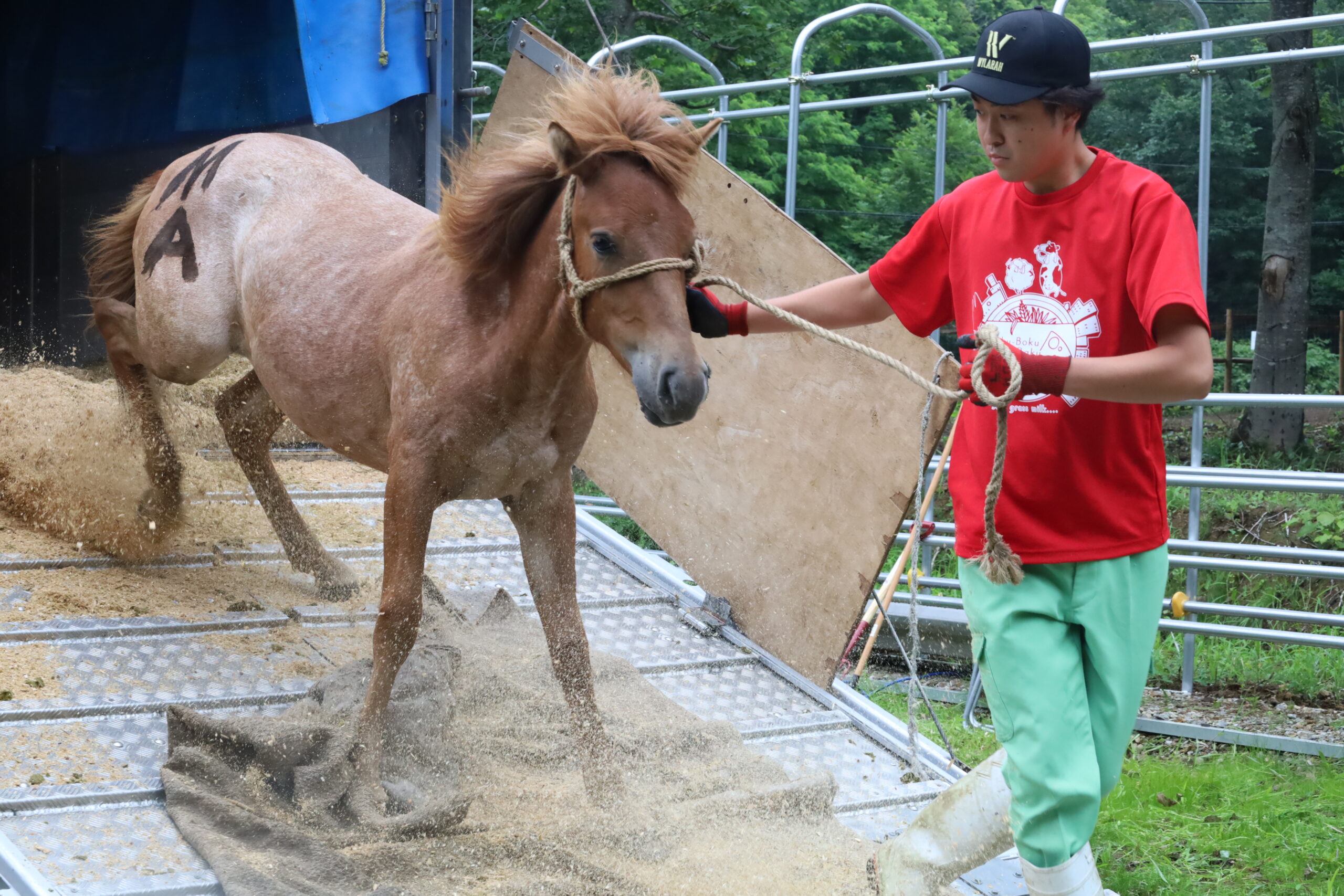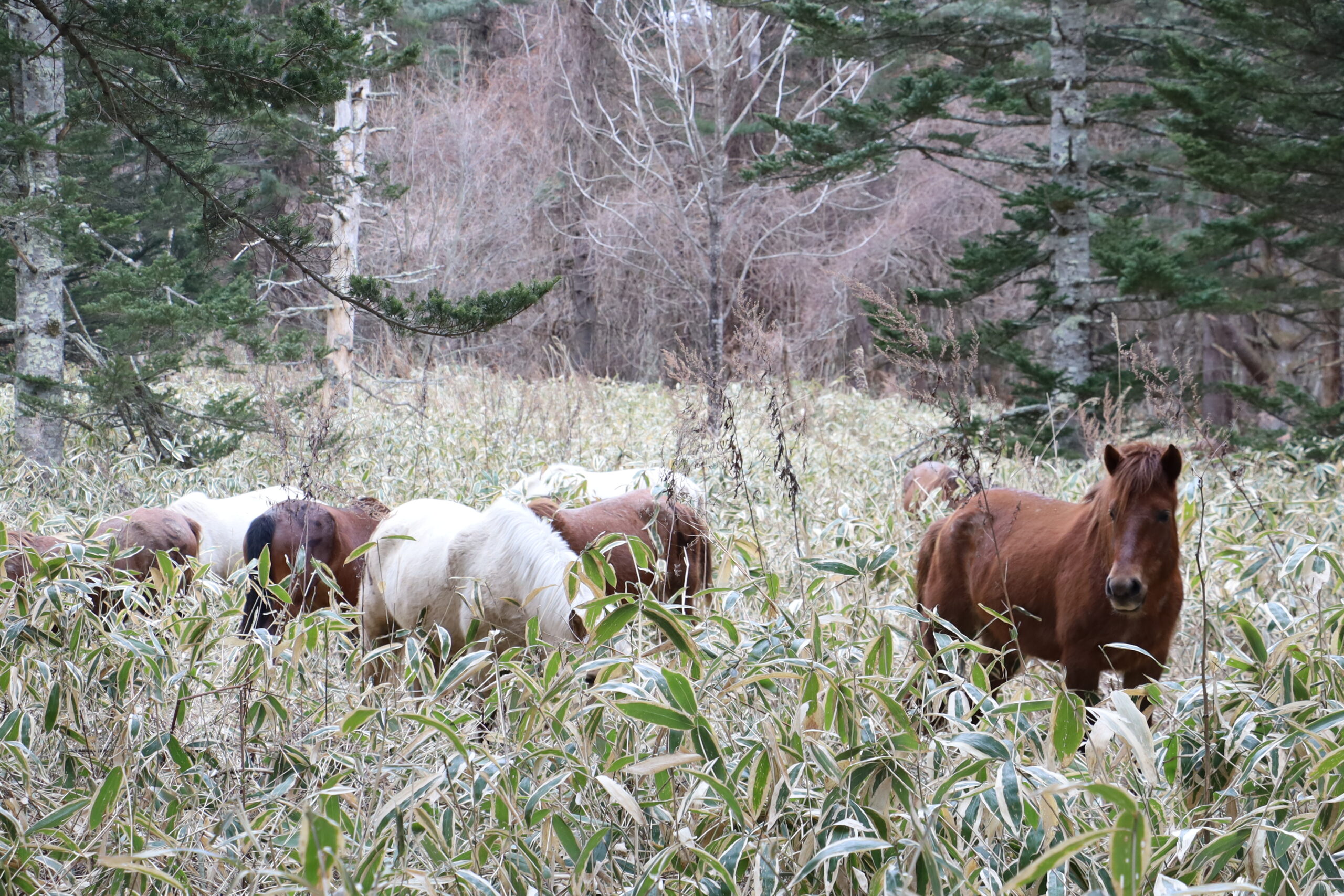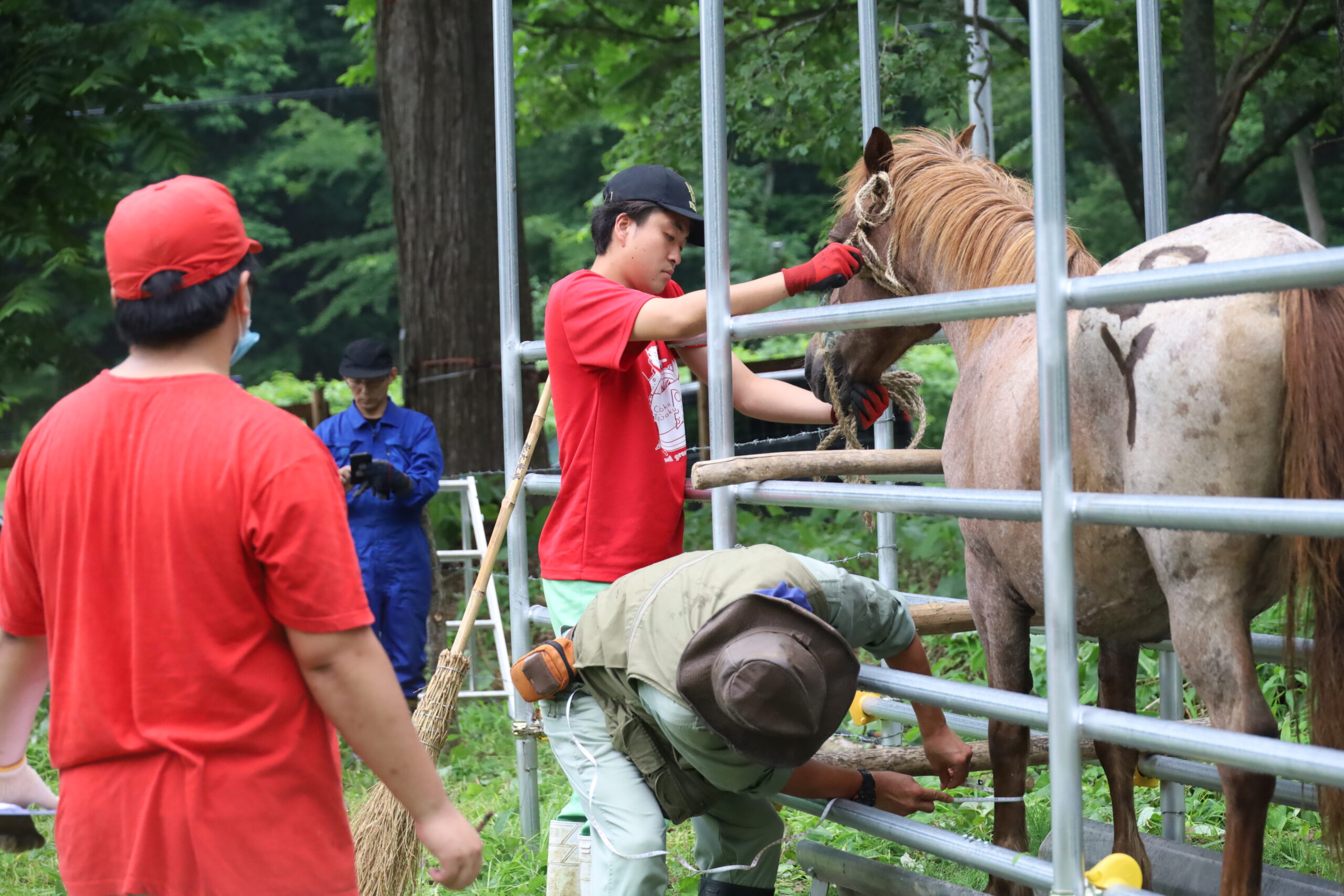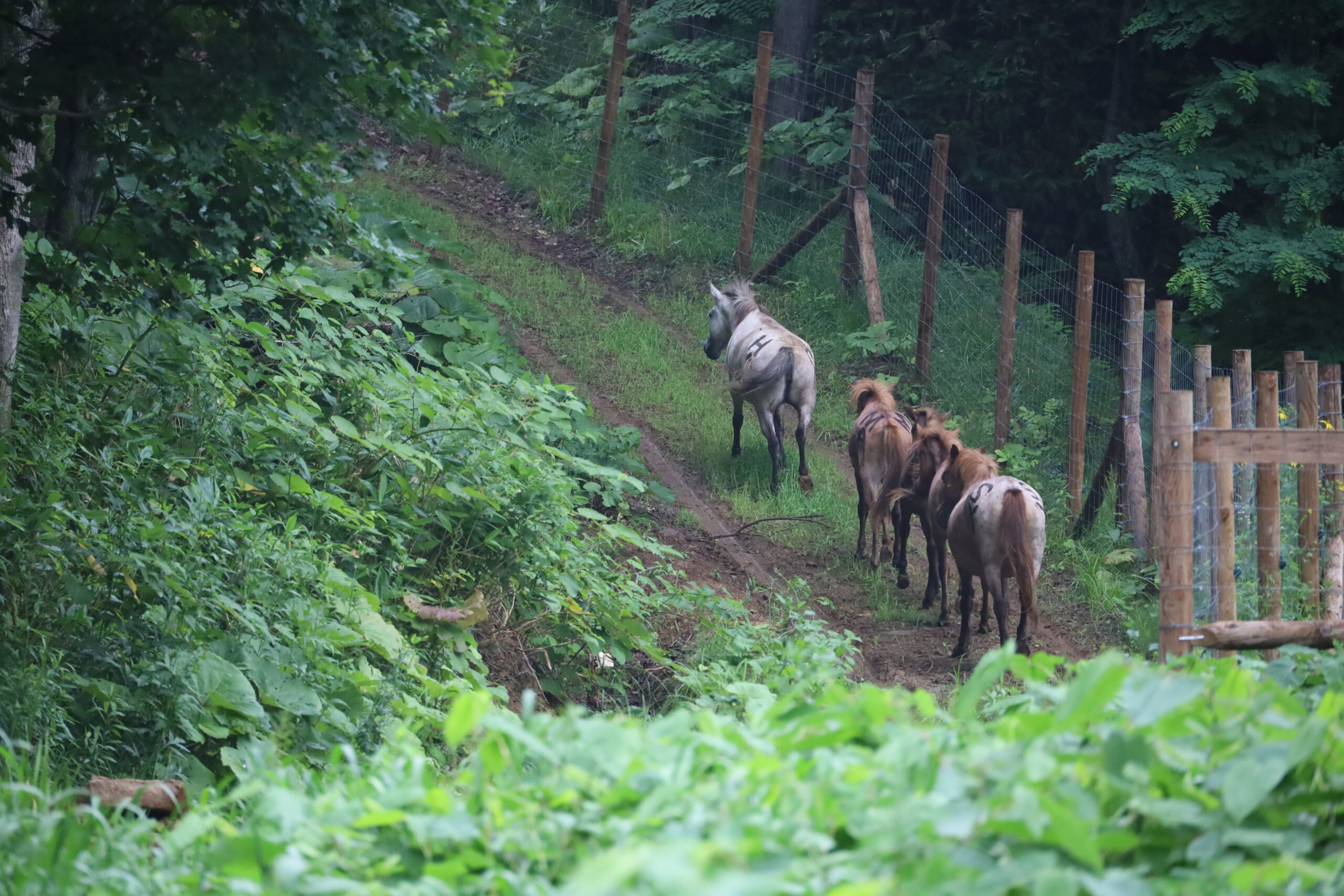An experiment to manage forests by feeding bamboo grass to horses from Hokkaido University's Shizunai Livestock Farm (Shinhidaka town, Hokkaido) has been taking place in the mountain forest of Bankei (Sapporo city, Hokkaido) since last year. This experiment is being carried out by Associate Professor Masahito Kawai of Hokkaido University's Field Science Center for Northern Biosphere, who is also the Director of the Shizunai Livestock Farm. On Tuesday, July 25, five Dosanko horses-Hokkaido's native horses-arrived from the Shizunai Livestock Farm. The horses will stay in the forest until the end of October, grazing on bamboo grass and other plants.
Forest Management with "Dosanko horse" grazing
Forests covered with bamboo, which are highly fertile, block sunlight and make it difficult for other plants to grow. This poses a major challenge for the regeneration of trees after logging, and for the diversity of plant species. Therefore, for more than 60 years, the Shizunai Livestock Farm has been conducting research on how to create a rich forest by letting Dosanko horses to graze in the forest and eat bamboo grass and other plants. Currently, the common method of removing bamboos is to use a bulldozer, which also removes the topsoil along with the bamboos. As a result, the trees that grow there consist of a limited number of species. On the other hand, forest management with horse grazing can leave nutrients in the soil and regenerate a greater variety of plants.
"Livestock are raised to produce food, meat, milk, etc., but they are also useful for forest management. Moreover, when Dosanko horses eat grass and trees up to 2m high, such as bamboos, it improves visibility and therefore can help us protect the forest from animal damage. Managed forests provide a good buffer between the forests where deer, bears, and other wildlife live and the urban areas where people live," says Kawai.
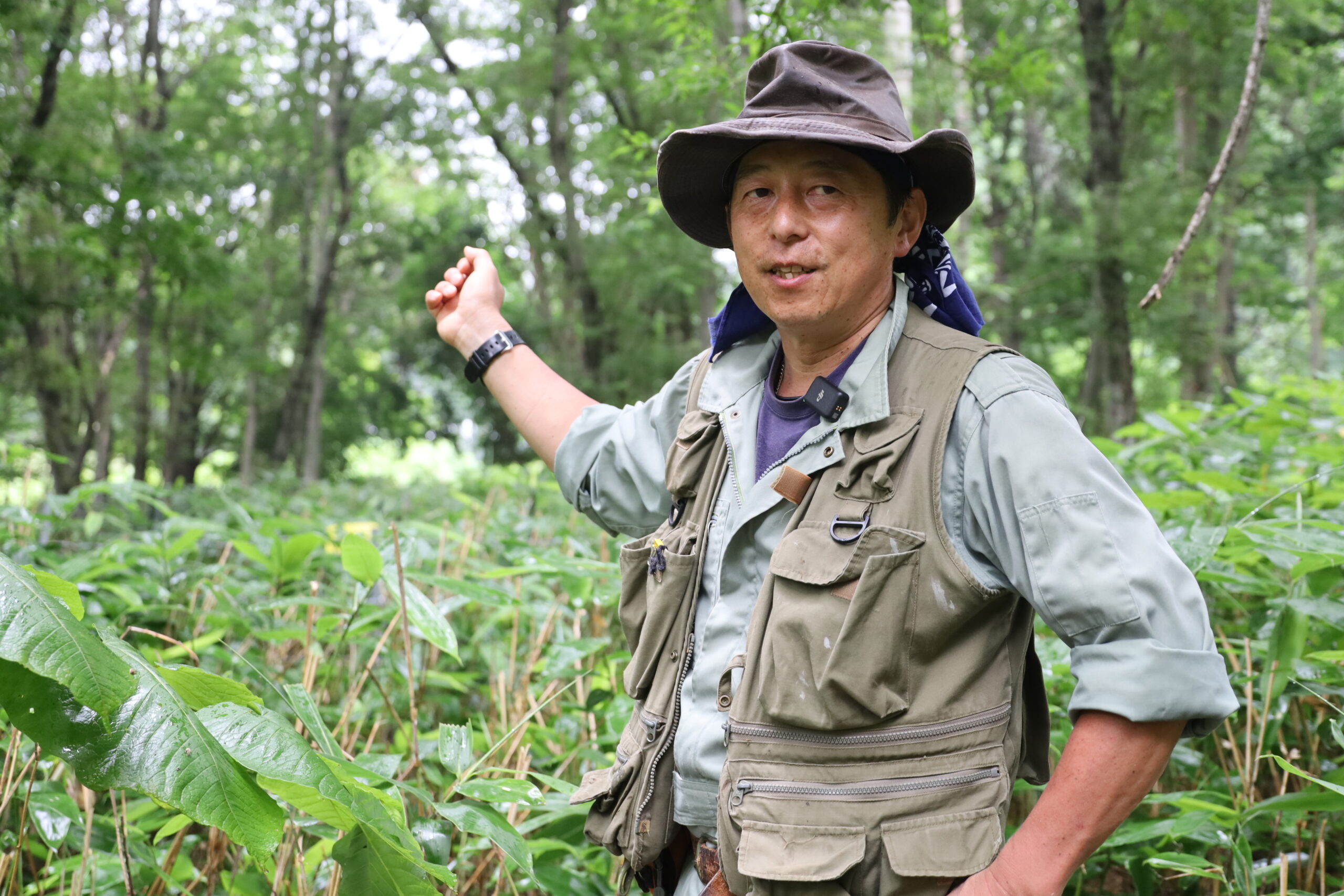
Associate Professor Masahito Kawai, Field Science Center for Northern Biosphere and Director of the Shizunai Livestock Farm, Hokkaido University
Experiment in the Bankei Forest
Last year, the forest management experiment started in Sapporo as well, using Dosanko horses from the Shizunai Livestock Farm. The horses graze in the forests of the Bankei Farm, owned by Utopia Agriculture-an affiliate of Kinotoya, a confectionery company in Sapporo. Nine Dosanko horses were grazed for approximately three months, from mid-September to mid-December, last year. As a preliminary result, the weight of bamboo per square meter was reduced from approximately 500g to 150g.
Around noon on July 25 this year (2023), another five Dosanko horses arrived in Bankei from the Shizunai Livestock Farm. After measuring their weight, height (at the shoulder), chest circumference, and leg circumference (thickness of the left front leg), the horses were put out to pasture in the mountain forest. The horses will spend until the end of October in a 6-hectare mountain forest, eating bamboo grass and other plants.
Dr. Takayuki Azuma, Assistant Professor at Hokkaido University's Botanic Garden, Field Science Center for Northern Biosphere, is a specialist in plant taxonomy, and is studying the flora of this mountain forest. In addition to recording every vascular plant species that grows in this forest, a fenced-off area where horses cannot enter has also been set up, to compare the effects of the horses' feeding on the plants. Azuma says, "Bamboo have a high regenerative capacity, but I believe that the repeated grazing by horses causes the underground stems to decline, resulting in a decrease in the number of bamboos over a period of several years. Therefore, we are planning to continue surveying at the same time each year, to monitor the quantity of bamboo and changes in the vegetation. One notable observation I would like to mention is that in the plot where the bamboo grass flowers were observed last year, which are said to bloom before they die, the bamboo grass has not recovered much after being eaten by horses. In that plot, the bamboo may decrease faster than expected, and then new plants may grow," he said.
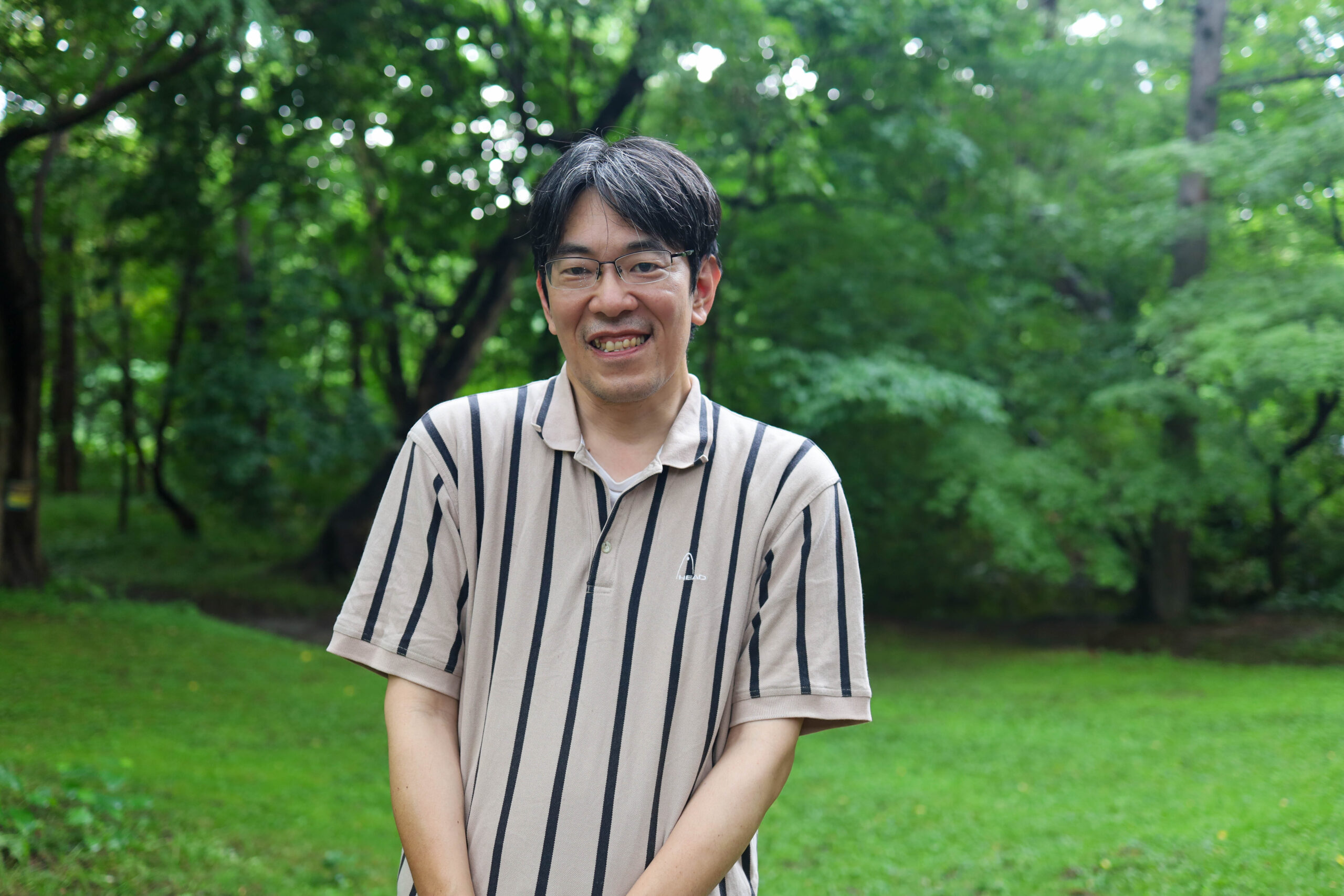
Assistant Professor Takayuki Azuma, Botanic Garden, Field Science Center for Northern Biosphere, Hokkaido University (Photo taken by Miho Nagao)
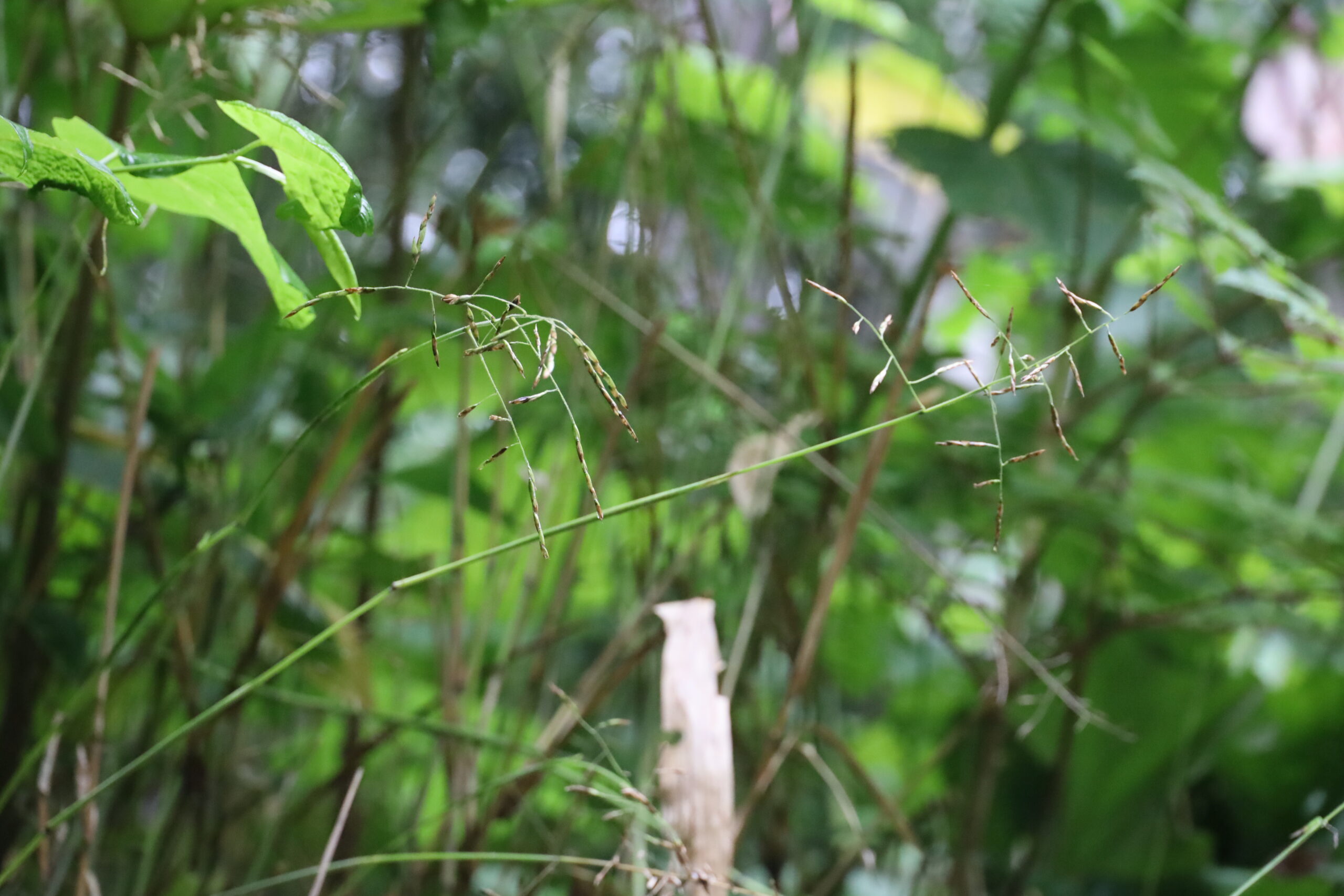
Bamboo grass flowers bloomed again this year, as they did last year. They are known to bloom before the plants die.
This experiment by Kawai and Azuma will continue for five years to observe the growth of bamboo grass and other plants, furthering our understanding on how the forest will change and what kind of plants will grow during the period.
"By creating new employment opportunities for Dosanko horses, which are now in danger of extinction, we hope we can also help them survive," says Kawai. Dosanko horses are said to have the potential to be riding horses or saddle horses as well; one day, one might be able to stroll through the forests maintained by these horses, riding on a Dosanko horse.
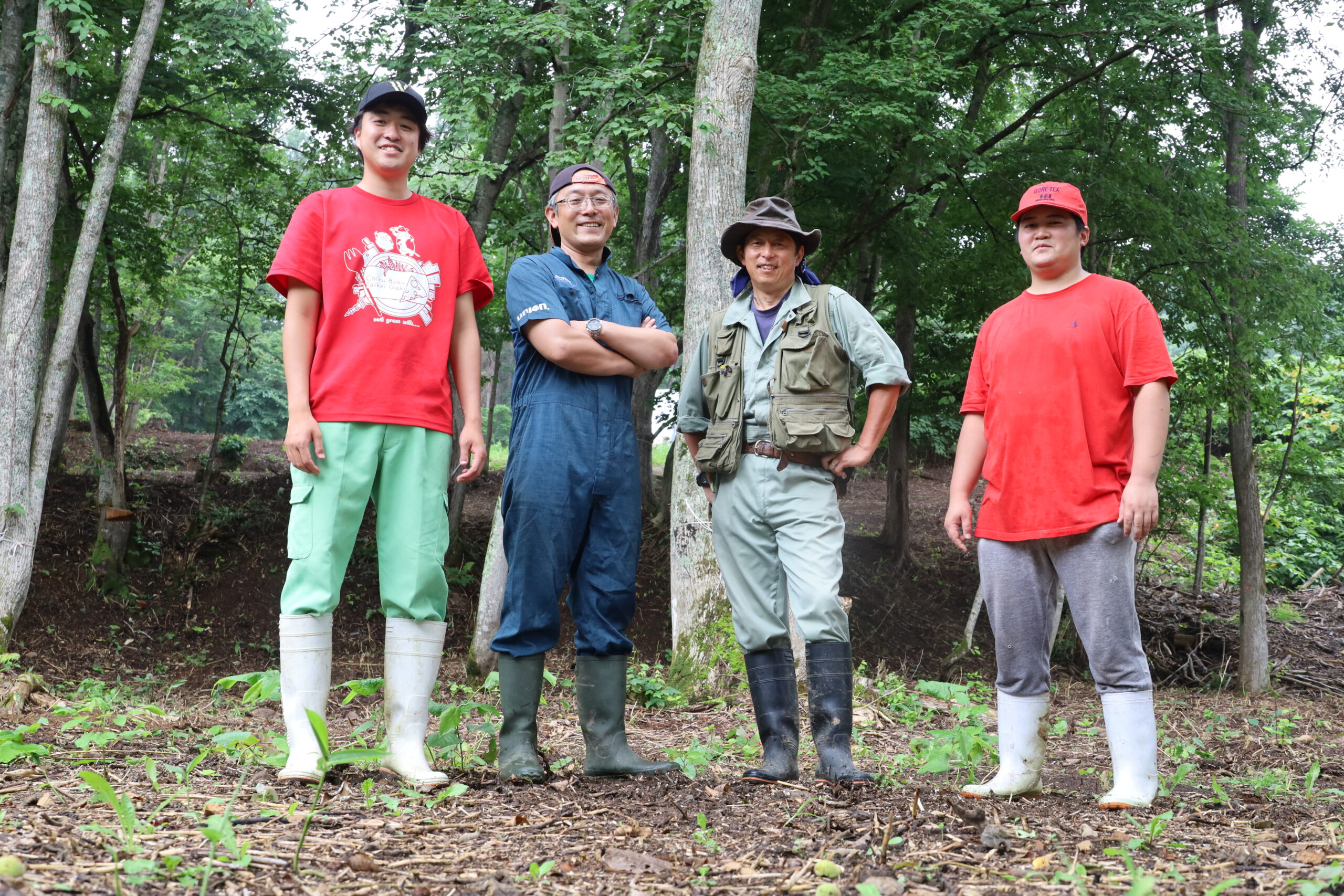
Yoshihiro Teshima from the Graduate School of Environmental Science (right), Director Masahito Kawai of the Shizunai Livestock Farm (second from right), Associate Professor Tomohiro Mitani from the Research Faculty of Agriculture (second from left), and Shunpei Sakurai, a first-year doctoral student from the Graduate school of Agriculture (left).
Originally written in Japanese.
Rearranged by Ayumi Hasegawa

